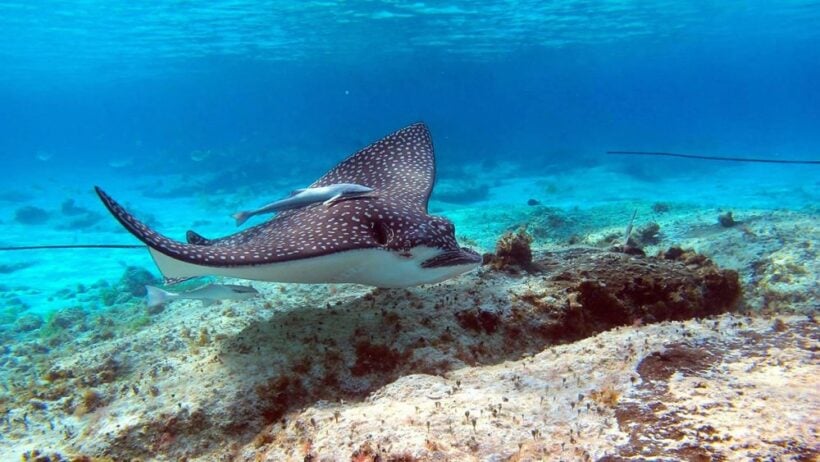Is cooking endangered rays on ‘MasterChef Thailand’ OK?

by Pratch Rujivanarom
Despite experts confirming that fishing, cooking and eating spotted eagle ray is completely legal in Thailand, as Thai law still does not include the species in the country’s protected animal list, many people say that the use of endangered species as cooking material on the popular TV show jeopardised the efforts to conserve these and other rare animals.
Earlier on World Wildlife Day, which highlights the conservation of marine biodiversity, the reality cooking-competition show “MasterChef Thailand” had selected stingrays as the main ingredient for the program.
But after the show had aired it was noticed that the rays used in the TV show were the rare spotted eagle variety.
The discovery has sparked hot debate on social media over the legality and appropriateness of consuming this endangered marine species, with one side strongly pointing out that the consumption of endangered rays was unacceptable, while the other side argued that such stingrays were not that rare and their consumption was widespread in the Kingdom.

Thon Thamrongnawasawat, a leading marine biologist at Kasetsart University’s Faculty of Fisheries, said the exact ray species that had been used on the TV show had not yet been confirmed, but it was very likely the fish were one of two spotted eagle species – Aetobatus ocellatus, which can be found in the tropical Indo-West Pacific region, or Aetobatus narinari, which live in the Atlantic Ocean.
According to the International Union for Conservation of Nature (IUCN), both spotted eagle ray species have conservation status, as they are endangered by unsustainable fishing and habitat loss and their populations are in decline.
Aetobatus ocellatus is listed as vulnerable on the IUCN red list, while Aetobatus narinari is listed as near-threatened, Thon said.
The marine biologist confirmed that despite the international conservation status of both species, their consumption on the TV show would have been legal, because these ray species were still not protected under Thailand’s animal conservation law.
SOURCE: The Nation
Latest Thailand News
Follow The Thaiger on Google News:


























